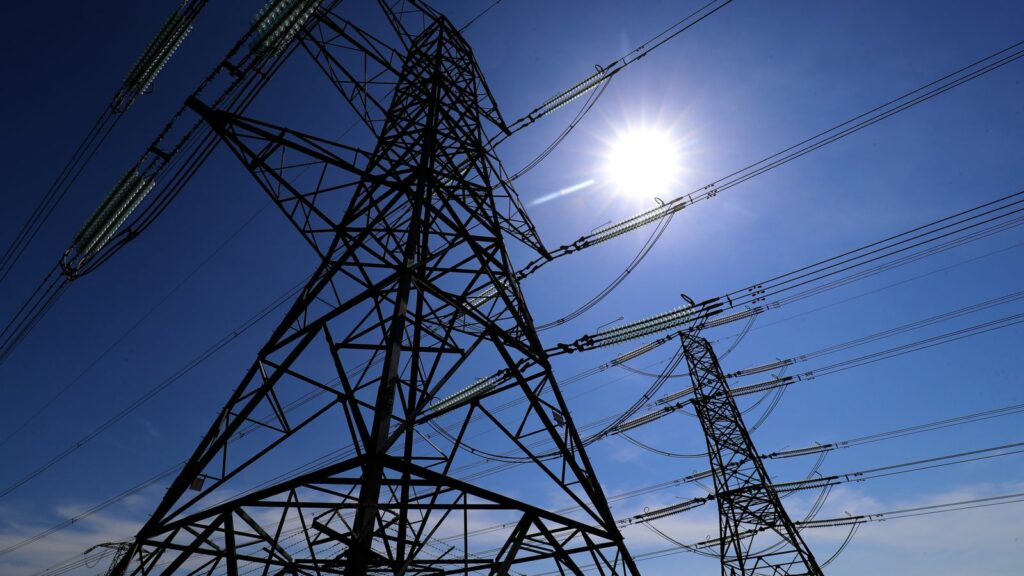Why the energy price cap has come down for April – to what could be a new normal after Russia’s Ukraine invasion | Business News

The reduction in the Ofgem price cap that will apply from April may be the final step on the long, ruinously expensive road to a new normal for consumer energy prices.
The guide price for typical annual dual-tariff use of £1,690 – a fall of 12.3% from the previous cap – is a dramatic reduction from the peak of more than £4,000 that applied just a year ago and prompted multi-billion pound state support for every household in the country.
After bouncing between £1,800 and just shy of £2,000 in the three quarters since last June, this reduction, taken with projections of a further drop to around £1,500 in three months, could represent the floor for post-Ukraine invasion prices.
To be clear, a price that’s still considerably higher than the £993 we expected to pay in the winter of 2020-21 represents a dramatic, material and permanent increase in the cost of living, and a return to that level is unlikely as long as Russia is a global pariah at war.
Energy markets may look becalmed but volatility is in their nature.
Read more:
What is the price cap – and how will it affect my bills?
Energy price volatility temporarily subsides
A warm, wet winter helped UK domestic gas demand fall 16% in 2023 compared to the pre-war average, but the weather has flattered UK energy security.
Much of the flow of gas from Russia has been replaced by liquid natural gas from Australia, the US and Qatar, and pipelines from Norway, all ostensibly friendlier nations, but the UK remains exposed to the kindness of strangers to heat homes and fire power stations.
The long-term answer is low-carbon and renewable energy sources, but while Vladimir Putin has provided the clearest motivation yet to accelerate, the transition has become significantly more expensive than anticipated.
The offshore wind industry in particular has had a brutal year with supply chain resources finite and finance, like power, no longer cheap.
For consumers, however, this lull may signal the return of a functioning competitive market among suppliers.
Since Russian tanks rolled into Ukraine the Ofgem figure has been a cap in name only.
In practice, it’s been a universally applied maximum charge, with the taxpayer picking up the balance of every pound over £2,500.
Lower wholesale prices, helped by the caprice of a mild winter, mean suppliers may have to work a little harder for your custom.
British Gas is already offering a fixed price guaranteed at £1 below the April price cap, while E.On is offering a 3% discount on the cap for a year.
Not much compared to the wild (and entirely unsustainable market) that existed before the war, but it is a start.
More than billpayers welcoming the fall
The reduction will be welcome at the Treasury too. Having set the precedent of paying our energy bills and allowing the national debt to balloon close to 100% of GDP in the process, there is no appetite to return to feeding the national meter.
With the cap now around half the more than £3,100 that applied in April last year there will be downward pressure on inflation too, though don’t expect the Bank of England to rush to cut rates as a consequence.
The biggest annual reduction in bills was factored into the figures for last October, helping drag CPI down from its 11% peak, and the Bank of England is already looking ahead to when the gravitational pull of energy prices falls out of the figures and secondary factors start to drive the headline rate.
There may also now be space for Ofgem and ministers, election permitting, to examine some of the remaining obvious flaws in the domestic market.
Electricity remains almost four times more expensive per unit than gas thanks to green taxes, despite gas being the fuel we need to remove from the network if net zero and energy security are genuine goals.
If the government is serious about incentivising the decarbonisation of home heating with heat pumps – an open question – these running costs will have to be addressed alongside installation grants.
And standing charges remain a regressive charge for billpayers, with electricity costing more than £3.50 a week before you have turned a light on, though the new cap makes that a slightly less terrifying prospect than a year ago.

Recent Comments